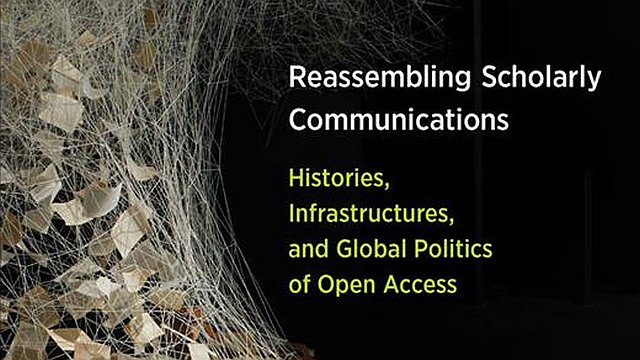
Bellingcat’s report on MH17 shows citizens can and will do intelligence work
Tim van Gelder, University of Melbourne
Amid the news last week that the perpetrators responsible for shooting down Malaysia Airlines Flight 17 (MH17) will be put to trial next March, a report was released identifying further suspects responsible for escorting the missile to and from the launch site.
Who were the investigators behind the report? The CIA? MI6? No. It was Bellingcat, a large group of mostly volunteers working from laptops using only information available to anyone with an internet connection.
In February, Bellingcat also identified a third suspect alleged to have been involved in the poisoning of MI6 double agent Sergei Skripal and his daughter Yulia in the United Kingdom last year.
Bellingcat describes itself as citizen journalists, but its activities illustrate a growing phenomenon my colleagues and I call “citizen intelligence.” This is work that would count as intelligence gathering or analysis within an intelligence organisation, but it’s undertaken by citizens operating outside the traditional intelligence ecosystem.
The rise of citizen intelligence
Citizen intelligence has been made possible by the internet in various ways.
Since its advent, we’ve seen an explosion of “open source” information. That is, data that’s accessible without any special organisational privileges. For example, just by opening Google Earth you can view satellite data of the kind only available to analysts in government agencies not many years ago.
There are now free new tools for gathering and analysing these vast troves of information, such as the analysis platform Maltego. Aspiring citizen analysts can now train themselves using resources available online or in workshops offered by various organisations.
Expertise in intelligence work is no longer the preserve of those hired and trained by traditional organisations. Powerful collaboration platforms, such as Google Docs, allow interested individuals to work effectively together, even when scattered around the world.
It could get even bigger
We’ve all seen how global, cloud-based marketplaces such as Amazon, Airbnb and Uber have transformed their respective domains. Citizen intelligence could grow even faster if a suitable marketplace is developed. At the SWARM Project, we’ve begun exploring the potential design of a platform where those seeking intelligence can transact with those willing to provide it.
What might that look like? A marketplace for citizen intelligence could be built on a “sponsored challenge” crowdsourcing model.
Imagine an organisation with an intelligence question. Say, for example, the organisation wants to identify potential threats to a proposed infrastructure development in an unstable region. The organisation pays to have the question posed as a challenge on the platform, with a prize for the best answer. Groups of citizen analysts self-organize and submit reports. When the deadline is up, the best report garners the prize – and bragging rights.
Why crowdsourced citizen intelligence could be effective
There are reasons to think that crowdsourced citizen intelligence could match, or outperform, traditional intelligence organisations on some kinds of tasks. Traditional organisations have advantages, such as access to classified information and highly trained analysts, but crowdsourcing has compensating strengths.
Scale
Many intelligence organisations are small and under-resourced for the number and complexity of issues they are supposed to handle. Crowdsourced intelligence can potentially draw from much larger pools of citizens. For example, the analytics crowdsourcing platform Kaggle has over a million people signed up, and it gets literally thousands of teams competing on big challenges.
Diversity
With scale comes diversity. Large groups inherently possess more diverse knowledge, expertise and perspectives. A question like the one in the example above might require fluency in an obscure dialect, or specific technical know-how. No intelligence agency can maintain in-house everything it might need for any problem.
Agility
Crowds can be more agile than agencies, which are risk-averse bureaucracies. For example, individuals can more quickly access and use many of the latest analytical methods and tools.
Passion
Perhaps most importantly, intelligence work by unpaid volunteers is driven primarily by passion. Passion certainly exists within agencies, but is often stifled in various ways.
The SWARM Project ran a tournament-style experiment in 2018 that illustrated how everyday citizens can sometimes beat the professionals. Teams tackled four tough, fictional intelligence problems over four weeks. Some teams were made up of analysts provided by organisations with intelligence functions, some of analysts recruited via Facebook, and some of citizens (non-analysts) recruited via Facebook.
On average, the citizen teams outperformed the professional analysts – and some of the citizen reports were astonishingly good.
How this could affect the intelligence industry
Citizen intelligence will likely create some headaches for intelligence agencies. For example decision makers might increasingly look to citizen sources over formal intelligence agencies – particularly where citizen intelligence delivers reports more quickly, or with more “convenient” findings.
On the other hand, citizen intelligence could have a lot to offer intelligence organisations. A suitably designed marketplace might enable the traditional agencies to take advantage of the power inherent in the crowd. Such a platform could be a “force multiplier”, at least for certain aspects of intelligence.
In view of these potential threats and opportunities, the Australian intelligence community should get on the front foot, shaping the future of citizen intelligence rather than just reacting to it.
This is a condensed version of a presentation given at the Technology Surprise Forum, Safeguarding Australia Summit, Canberra May 2019![]()
Tim van Gelder, Enterprise Research Fellow, University of Melbourne
Article source: This article is republished from The Conversation under a Creative Commons license. Read the original article.
Header image source: Tim de Groot/Unsplash.


![Crowd Human Silhouettes Personal Group of People [Pixabay image 2045499]](https://realkm.com/wp-content/uploads/2018/05/crowd-2045499_640.jpg)



